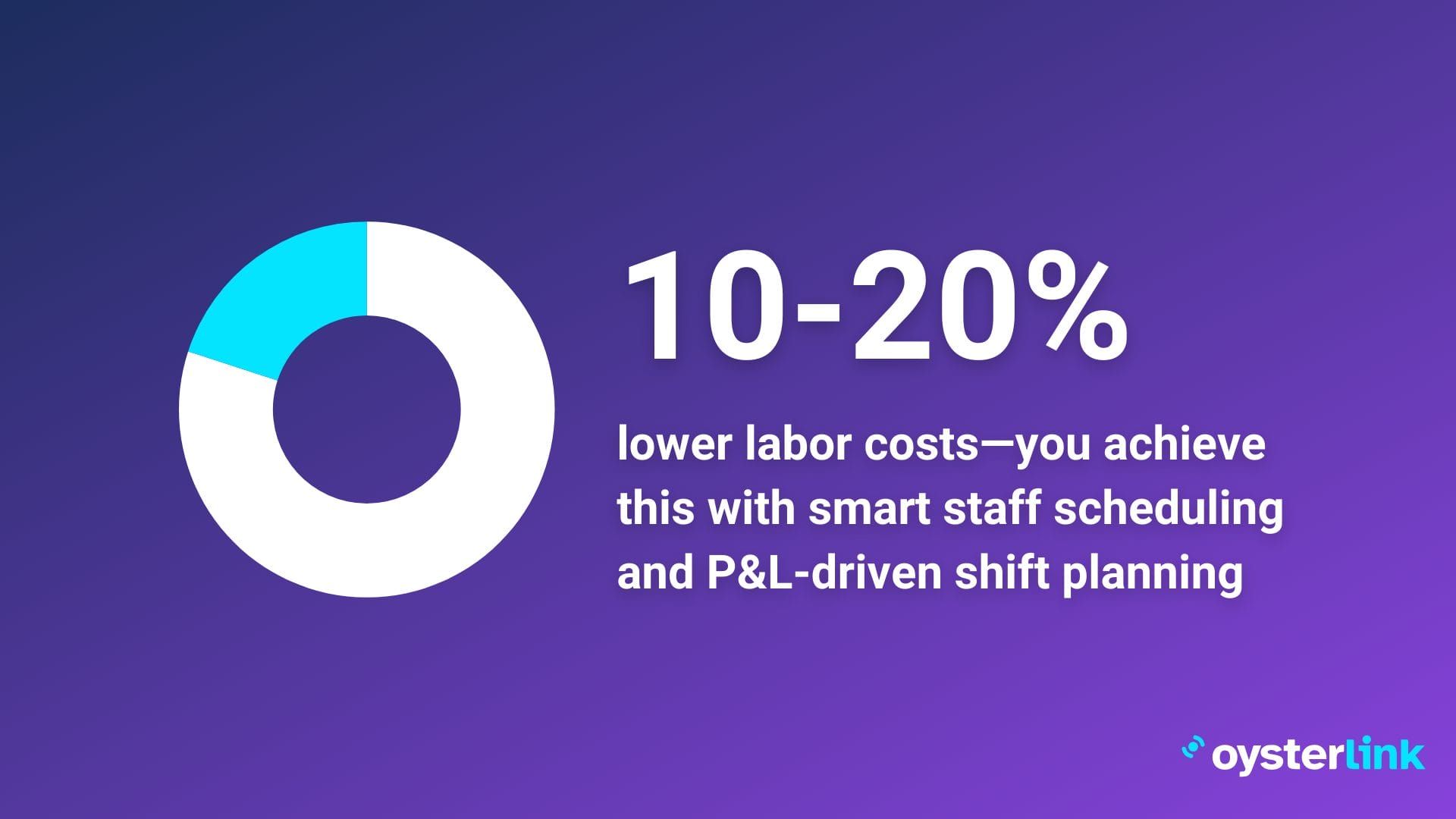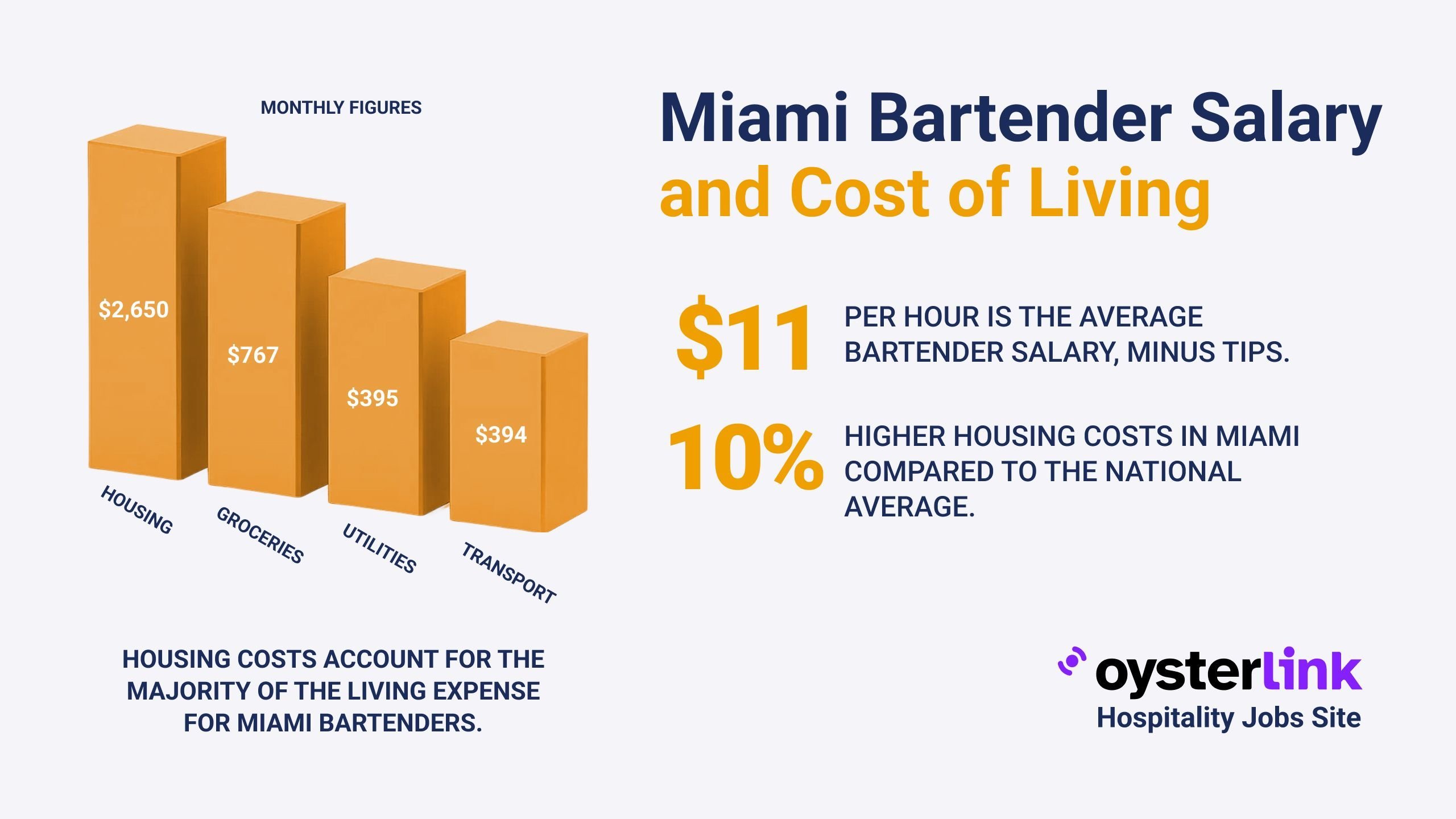Restaurant P&L: 3 Key Takeaways
- Restaurants that move from monthly to weekly P&L analysis can boost profitability by 2–5% of sales.
- Prime costs (COGS + labor) should stay at or below 60% of total sales to maintain strong margins.
- Advanced scheduling tools that incorporate P&L data and sales patterns can reduce overtime expenses by 75%.
Restaurant P&L performance can quietly make or break your bottom line.
Used strategically, your profit and loss statement becomes more than a report, it’s a tool for uncovering waste and maximizing profits.
This guide shows you how to put your numbers to work and drive smarter decisions every week.
Why Most Restaurant P&L Statements Fail
Restaurant operators often use standard accounting software that doesn't address their unique industry needs.
This mismatch creates financial tracking problems that can hurt your bottom line.
Outdated tracking methods
P&L reviews done monthly leave you working with stale information that's "ancient history" by the time you see it.
On top of that, running your restaurant on a traditional calendar month instead of a 4-week cycle makes it hard to spot true performance patterns.
Traditional bookkeeping misses the unique parts of restaurant operations, especially tracking food costs and labor expenses as they happen.
Simple accounting methods won't catch portion control problems or extra overtime until weeks later.
Poor data organization
Sales, inventory and labor tracking systems work in isolation, which fragments your restaurant's performance view.
Your key metrics spread across different platforms make it hard to spot worrying trends.
Restaurant owners often can't match data between their point-of-sale system and accounting records.
This disconnect then delays insights about cash balance, vendor payments and overall profitability.
Missing profit opportunities
Without weekly or daily P&L analysis, you can't spot and fix issues that eat into your profits.
Working with outdated financial data means you miss chances to:
- Cut extra overtime costs that could save 5% in labor expenses
- Spot portion control problems before they hurt food costs
- Change purchasing patterns based on actual inventory needs
- Fix cash flow issues before they become serious
Your P&L statement works best as an active management tool, not just a monthly record.
Used right, it helps you analyze, forecast and assess your business success through timely operational decisions.
Key Components of a Profitable Restaurant P&L
The path to a profitable restaurant P&L statement lies in watching your financial components and tracking systems carefully.
You'll keep healthy profit margins and find opportunities to grow by understanding these key elements.
Sales breakdown structure
Your P&L statement needs a detailed breakdown of all revenue streams. We separated food, wine, beer, liquor and soft drink sales to start.
This detailed view lets you track how each category performs on its own.
Successful restaurants keep an eye on their gross profit margin - the percentage of revenue left after taking out Cost of Goods Sold (COGS).
A financially sound business should target a 50% gross profit margin.
Your net profit margin should land between 5% to 15% to show you're in good financial shape.
Cost tracking systems
Prime costs - the mix of COGS and labor expenses - need accurate tracking in your P&L.
A well-laid-out P&L breaks these down:
- Food and beverage costs: These should be about 30% of total sales
- Labor costs: Aim for 30% of total sales, covering wages for Cooks, Servers, Bartenders and support staff
- Operating expenses: Things like utilities, maintenance and marketing
- Occupancy costs: Regular expenses like rent, insurance and property taxes
Total prime costs should stay at or below 60% of total sales to maximize profits. This standard helps control your biggest variable expenses.
Daily and weekly inventory checks are essential to stop food spoilage and waste.
All the same, tracking means more than counting - you need recipe costing tools to figure out exact plate costs and see how profitable each menu item is.
Your P&L should let you check costs multiple times daily to work best.
This regular monitoring catches problems early and keeps tight control over expenses that affect your bottom line directly.
Essential Numbers Your Restaurant P&L Should Show
Your restaurant's profitability depends on tracking exact numbers in your P&L statement.
These key metrics guide your decisions about menu pricing, staffing and operations.
Food cost calculations
The food cost percentage comes from adding beginning inventory and purchases, then subtracting ending inventory from that total.
Your profits stay healthy when this number remains between 28% and 35% of your total revenue.
Recipe costing must show the exact cost of each menu item.
This detailed breakdown shows which dishes bring the highest profits and which ones need price adjustments.
Labor cost tracking
Labor expenses go beyond wages you pay to Chefs, Line Cooks and Servers.
The total cost has payroll taxes, employee benefits, overtime pay and uniform costs. Most profitable restaurants keep labor costs at 30% to 35% of total revenue.
The cost per hour for different staff groups matters.
To cite an instance, see how dividing weekly hours worked by average hourly wage reveals each team's true cost. This insight lets you optimize schedules and control overtime spending.
Operating expense breakdown
Operating costs come in three main categories:
- Fixed costs: Rent, insurance and equipment depreciation
- Variable costs: Utilities, maintenance and marketing
- Semi-variable costs: Management salaries and cleaning services
Your rent and utilities should stay under 5% to 8% of total revenue. Close monitoring of these expenses maintains healthy profit margins.
Daily number analysis helps spot worrying trends early.
When food costs rise above 35%, you can break down portion control issues or supplier pricing changes quickly.
Daily labor cost tracking also reveals ways to adjust staffing based on sales patterns.
Smart Ways to Use Restaurant P&L Data Effectively
A restaurant P&L statement helps you make smart decisions about menu engineering and staff management that boost profitability.
Numbers become actionable steps through careful analysis and practical implementation.
Menu pricing decisions
P&L data helps you set precise menu item prices based on actual costs and profit margins.
Your pricing strategy must consider both direct expenses and overhead costs, while food costs should stay between 28-35% of total sales.
P&L insights let you engineer your menu to spot your most profitable dishes.
Restaurants can update menu bundles and adjust prices based on ingredient availability and kitchen workload.
This informed approach lets you promote high-margin items and adjust or remove items that don't perform well.
Staff scheduling improvements
Smart staff scheduling using P&L data can reduce labor costs by 10-20% through better shift planning.
Sales trends and labor costs per hour analysis helps you arrange staffing levels with actual customer demand.

P&L insights lead to better scheduling decisions that stop overstaffing during quiet times.
You should track wages, overtime costs, benefits and training expenses to understand true labor expenses.
We focused on matching employee schedules to peak revenue periods while keeping service quality high.
Advanced scheduling tools that use P&L data can reduce overtime expenses by 75%.
These tools study past sales patterns and labor costs to create the best staff schedules.
This approach not only cuts costs but also makes employees happier through more consistent scheduling.
Watching P&L in real-time lets you quickly adjust staffing when sales patterns change.
Service quality matters, but labor costs should stay within 30-35% of total revenue.
Regular metric analysis helps you spot opportunities to adjust staff levels while keeping guest experience excellent.
How to Make Your Restaurant P&L Work Harder
Modern technology has reshaped how restaurants handle their financial data.
We squeezed more value from P&L statements through automated tracking and immediate analysis with the right software tools.
Digital tools that help
Restaurant management software lets you control your financial data precisely.
Note that these systems track your sales performance every 15 minutes, so you can boost profits quickly.
The software combines automated inventory management with demand prediction to prevent overspending and reduce food waste.
Point-of-sale systems connected to accounting software show you exactly how your business performs.
You can monitor daily sales patterns, track customer priorities and analyze transaction histories to make informed decisions about menu pricing and inventory.
These tools help manage payroll, monitor employee performance and create targeted marketing campaigns based on customer data.
Weekly check system
Studies show that weekly P&L reports can increase profits by 2-5% of sales.
Weekly monitoring helps you spot problems with hourly payroll or beverage costs faster than monthly reviews.
You can take corrective action right away.
Successful restaurants use weekly P&L data to:
- Track sales trends by day over 4-6 week periods
- Monitor prime costs and spot unusual patterns
- Assess portion controls and potential theft issues
- Budget purchases more effectively
Large chain operators prepare full P&L statements weekly.
Even independent restaurants benefit from tracking sales and prime costs this often.
Regular monitoring helps catch problems early - from excessive overtime to inventory shrinkage - often saving 1-3% on your bottom line.
Restaurant groups with weekly P&L systems can compare performance between different locations.
Managers learn from each other's wins and challenges while maintaining consistent standards across multiple venues.
Taking Action on Restaurant P&L Insights
Your P&L works like a report card that shows areas needing attention.
The key metrics you should track are:
- Food cost management through inventory controls
- Labor scheduling based on revenue patterns
- Menu pricing adjustments
- Operating expense optimization
- Cash flow monitoring
Management can receive automated weekly P&L submissions through software tools that blend with Point of Sale systems.
This frequent monitoring helps catch problems before they become persistent.
Restaurant groups can compare P&L data across locations, which lets managers learn from each other's wins.
Daily monitoring combined with strategic planning works best.
Regular P&L data analysis helps create better budgets, make smart decisions about food costs and identify important sales trends.
Your P&L becomes a dynamic tool that drives profitability through consistent analysis and action.
Conclusion: Maximizing Profit With a Smarter Restaurant P&L
Your restaurant’s P&L statement isn’t just a report—it’s your ultimate tool for profitability.
Used correctly, it can help you cut costs, optimize pricing and improve operational efficiency.
Instead of seeing it as just another financial document, leverage it to spot hidden losses, fine-tune labor costs and maximize profit margins.
The difference between struggling and thriving often comes down to how well you track and act on your numbers.
Whether it’s reducing food waste, optimizing staff scheduling, or adjusting menu pricing, your P&L holds the answers.


.png)

.png)
.png)